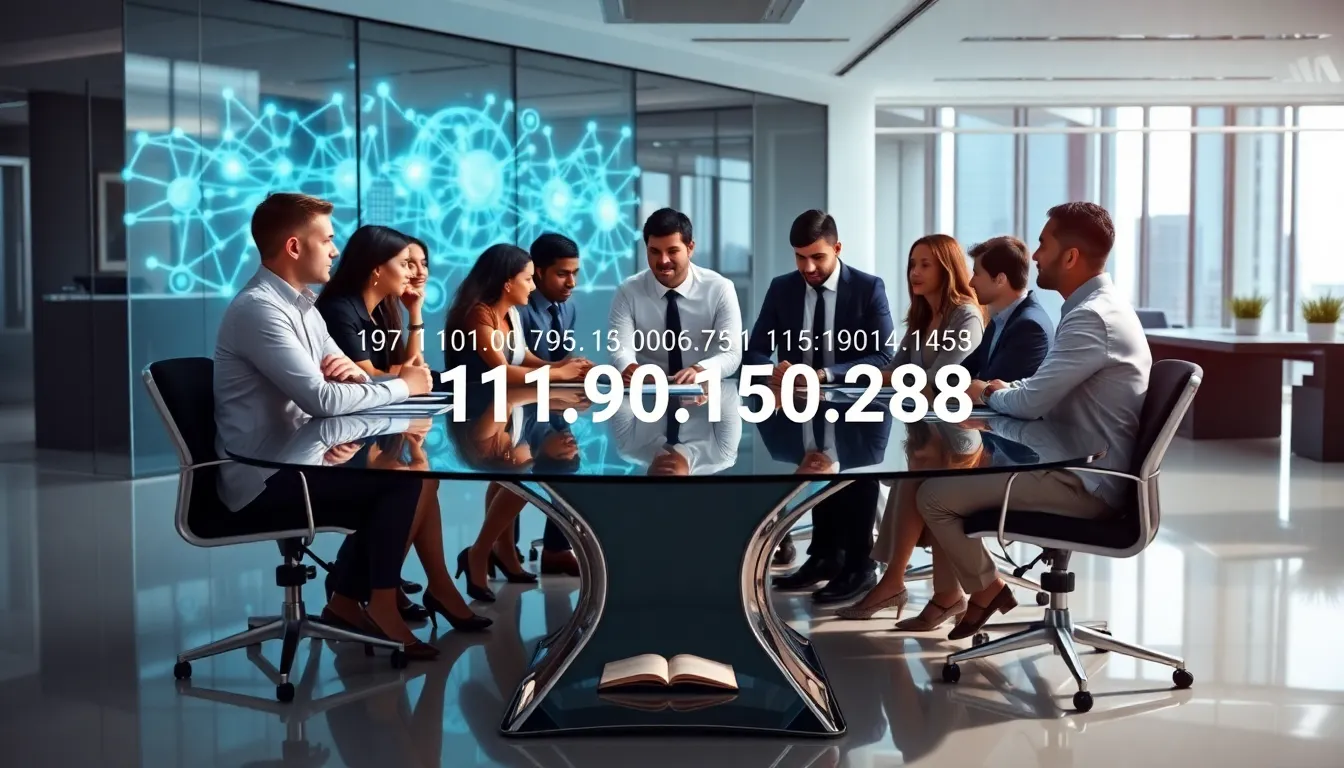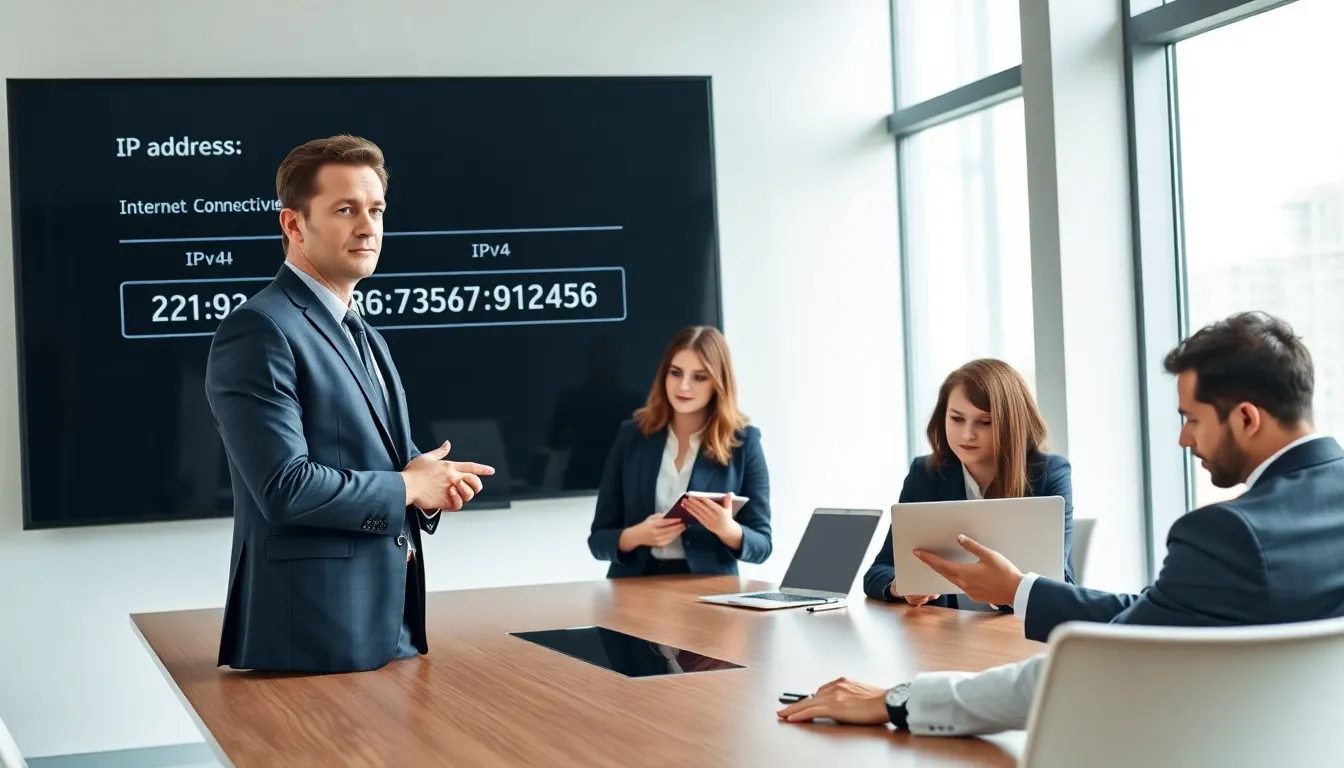Table of Contents
ToggleEver wondered why your internet connection throws a tantrum every now and then or why the strange numbers in your settings look like they belong in a sci-fi movie? Spoiler alert: it’s all about IP addresses. In this read, we’ll decode the digital chatter in a way that even your technophobe uncle can grasp. So, buckle up. You’re about to embark on a journey through the mysterious maze of IP addresses.
What Is an IP Address?

An Internet Protocol (IP) address serves as a unique identifier for devices connected to a network. Think of it as your home address in the digital world. Just like a postal address tells mail carriers where to deliver your letters, an IP address helps data packets find their way across the internet. Without this crucial element, your device would be lost in cyberspace, endlessly seeking the right destination.
Every device that connects to the internet, be it a laptop, smartphone, or smart fridge, needs an IP address to communicate with other devices. It’s primarily composed of a string of numbers, which, although seemingly random, adheres to specific formats that are essential for proper data transmission.
Types of IP Addresses
IP addresses come in two main flavors: IPv4 and IPv6.
IPv4
IPv4 addresses, the older of the two, consist of four sets of numbers separated by dots, like 192.168.1.1. This format allows for about 4 billion unique addresses. But, with the rise in internet-connected devices, we’re running out of IPv4 addresses faster than you can say “network overload.”
IPv6
To tackle this issue, IPv6 was introduced. It uses an alphanumeric format, significantly expanding the address space to an astonishing 340 undecillion (that’s 340 followed by 36 zeros). This ensures we won’t run out of addresses anytime soon and supports the ongoing growth of the internet.
Understanding Decimal and Binary Formats
IP addresses can be expressed in both decimal and binary formats.
Decimal Format
Most people are familiar with the decimal format. This is how we commonly write IP addresses, utilizing base-10 numbers. It’s user-friendly and makes it easier for us to type and memorize.
Binary Format
Conversely, computers prefer the binary format, which consists solely of 1s and 0s. For example, the IPv4 address 192.168.1.1 translates into binary as 11000000.10101000.00000001.00000001. The hexadecimal representation provides a more concise format but isn’t quite as human-friendly.
Converting between these formats can feel like cracking a secret code, but understanding the basics can boost your tech credibility.
Exploring the Significance of Each Octet
An IP address is divided into four groups called octets. Each octet ranges from 0 to 255, providing a structured way to represent an address.
The Role of Each Octet
The first octet typically identifies the network, while subsequent octets can designate various hosts within that network. For instance, in the IP address 192.168.1.10:
- 192 identifies the network.
- 168 distinguishes a subgroup.
- 1 marks the specific sub-network.
- 10 is the unique host.
Each octet plays a critical role in ensuring traffic is routed correctly and efficiently through networks.
Common Misconceptions About IP Addressing
Even though the importance of IP addresses, several myths persist. Here are a few common misconceptions:
- Myth 1: All IP Addresses Are Static. Many users believe they have a permanent IP address. In reality, most IP addresses are dynamically assigned, changing whenever a device connects to a new network.
- Myth 2: IP Address Security Guarantees Privacy. An IP address can give an approximate physical location, exposing users more than they realize. Additional security measures are necessary for true online privacy.
- Myth 3: IPv6 Is Only for Tech Professionals. As we shift towards IPv6 to accommodate more devices, everyone should be aware of its implications. Ignoring it may leave unsuspecting users floundering in the tech transition.
Clearing up these misconceptions is vital for better understanding the digital landscape.
Troubleshooting Invalid IP Addresses
Encountering an invalid IP address can feel like trying to send a letter to Mars: it’s frustrating and utterly pointless. Here are some common steps to troubleshoot:
- Check Your Connection. Ensure that your device is properly connected to the network. Sometimes, it’s as simple as a loose cable or a weak Wi-Fi signal.
- Clear Your Cache. Your device may be holding onto outdated data. Clearing the cache can refresh your connection settings and solve the issue.
- Reboot Your Router. Restarting the modem or router can resolve a world of connectivity woes, often fixing those pesky invalid address messages.
- Consult Your ISP. Should the problem persist, reaching out to your Internet Service Provider can provide insights into potential outages or network problems.
Navigating these obstacles requires patience, but understanding your IP address and its nuances can make the process smoother.








